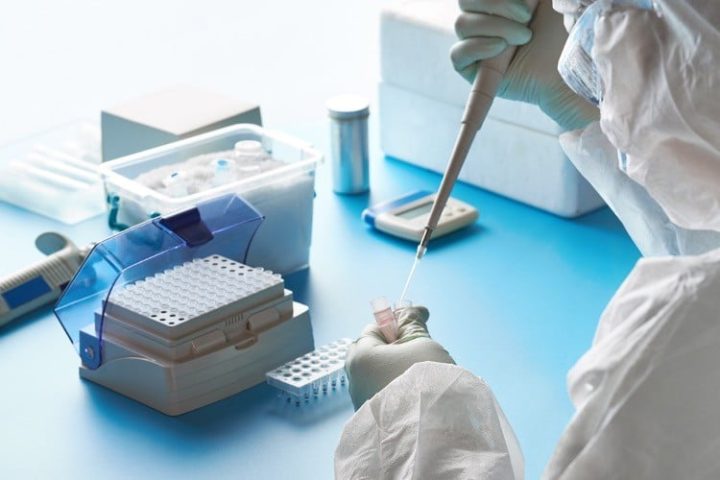
Evidence continues to mount that the China Virus escaped a lab at the Wuhan Institute of Virology.
The latest clue is a “previously undisclosed U.S. intelligence report,” the Wall Street Journal reported on Sunday, that says three lab workers at the institute sought hospital care in November 2019 when they developed a flu-like illness.
“The details of the reporting go beyond a State Department fact sheet, issued during the final days of the Trump administration, which said that several researchers at the lab, a center for the study of coronaviruses and other pathogens, became sick in autumn 2019 ‘with symptoms consistent with both Covid-19 and common seasonal illness,’” the Journal reported.
If true, the latest report would put to rest claims that the potentially fatal virus went directly from bats to humans, or sprung from the city’s filthy wet markets that sell exotic animals, including bats, for human consumption.
Intel Report
Suggestions that the China Virus, a bat-borne pathogen, escaped a lab at the institute have been dismissed as just another crazy conspiracy theory. But yet another report — and it isn’t the first — adds more evidence that the conspiracy theory isn’t so crazy.
“Current and former officials familiar with the intelligence about the lab researchers expressed differing views about the strength of the supporting evidence for the assessment,” the Journal reported.
Though one source told the Journal the intelligence assessment needed more corroboration, “another person described the intelligence as stronger.”
“The information that we had coming from the various sources was of exquisite quality,” the source told the newspaper. “It was very precise. What it didn’t tell you was exactly why they got sick.”
Amusingly, the Chinese Reds claim the virus might have escaped from Fort Detrick, Maryland, but that crazy conspiracy theory aside, the Journal noted that a Dutch virologist revealed two months ago “that some WIV staff did fall sick in the autumn of 2019, but she attributed that to regular, seasonal sickness.”
“Still, it could be significant if members of the same team working with coronaviruses went to hospital with similar symptoms shortly before the pandemic was first identified,” the newspaper reported:
David Asher, a former U.S. official who led a State Department task force on the origins of the virus for then-Secretary of State Mike Pompeo … doubted that the lab researchers became sick because of the ordinary flu.
“I’m very doubtful that three people in highly protected circumstances in a level three laboratory working on coronaviruses would all get sick with influenza that put them in the hospital or in severe conditions all in the same week, and it didn’t have anything to do with the coronavirus,” he said, adding that the researchers’ illness may represent “the first known cluster” of Covid-19 cases.
The State Department fact sheet issued during the Trump administration, which drew on classified intelligence, said that the “U.S. government has reason to believe that several researchers inside the WIV became sick in autumn 2019, before the first identified case of the outbreak, with symptoms consistent with both Covid-19 and seasonal illnesses.”
The Jan. 15 fact sheet added that this fact “raises questions about the credibility” of Dr. Shi [Zheng-li] and criticized Beijing for its “deceit and disinformation” while acknowledging that the U.S. government hasn’t determined exactly how the pandemic began.
Earlier Reports
The Journal’s revelation comports with previous reporting on the deadly pathogen’s origin.
As The New American reported in early May, Nicholas Wade, a former science writer for the New York Times, suggested that the virus did indeed leak from the lab, where Shi Zheng-Li was injecting a souped-up bat coronavirus into “humanized” mice. Helping the notorious Bat Lady was an American scientist.
In his 11,000 word dispatch in the Bulletin of Atomic Scientists, Wade disclosed the doings at the lab:
Shi then teamed up with Ralph S. Baric, an eminent coronavirus researcher at the University of North Carolina. Their work focused on enhancing the ability of bat viruses to attack humans.… In pursuit of this aim, in November 2015, they created a novel virus…. This manufactured virus was able to infect the cells of the human airway, at least when tested against a lab culture of such cells.…
“It is clear that the Wuhan Institute of Virology was systematically constructing novel chimeric coronaviruses and was assessing their ability to infect human cells and human-ACE2-expressing mice,” says Richard H. Ebright, a molecular biologist at Rutgers University and leading expert on biosafety.
The level of biosecurity at the lab was the same as that of a dental office, Wade reported, which highly concerned U.S. intelligence officials, the Washington Post reported last year.
In April 2020, U.S. intelligence sources told Bret Baier of Fox News that the virus originated in a lab.
“A Senior Intelligence Source tells me there is agreement among most of the 17 Intelligence agencies that COVID-19 originated in the Wuhan lab,” Fox’s John Roberts tweeted.
Last year, Newsweek disclosed that the National Institute of Allergy and Infectious Diseases, which Anthony Fauci has been running since 1984, subsidized the Bat Lady’s gene-forwarding experiments. Wade’s report detailed the route those subsidies took.
In a recent exchange with Senator Rand Paul (R-Ky.), Fauci denied backing those experiments and said his agency did not subsidize them.
Fauci’s claims were untrue:
Yesterday, the Journal reported that many scientists want a “closer examination of the lab hypothesis.”



